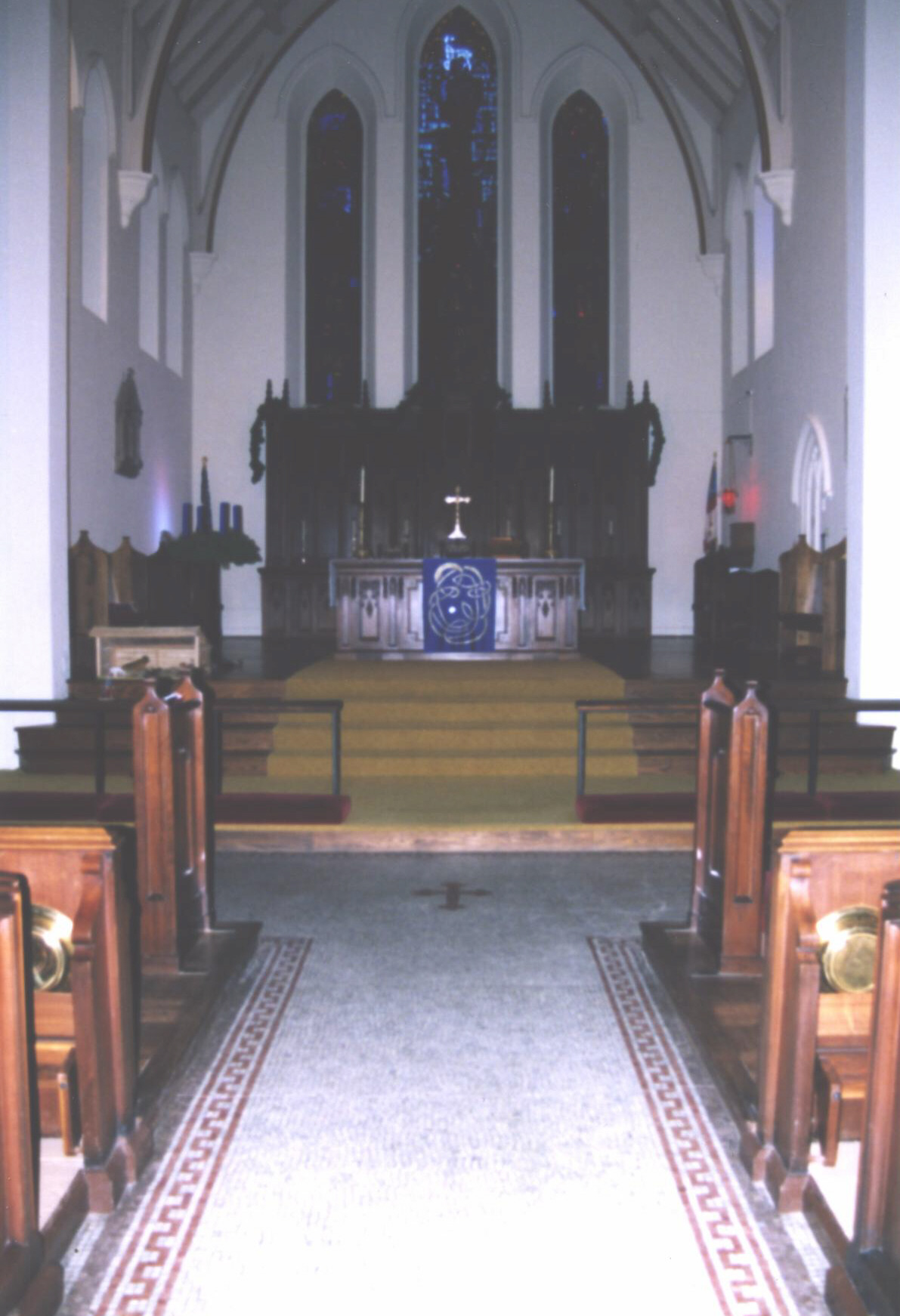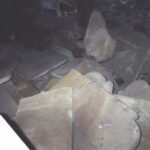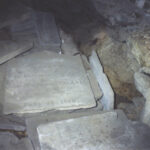Nathan was born in Lebanon, CT, on 3 Nov 1772 to Elkanah Tisdale and Abigail Hodge. He was the 3d of ten children that I have found records for. His early life, like so many people in this era, is not well documented. However, it appears that he found an interest in medicine, and on 10 March 1799, he joined the new US Navy while in Norwich to gain some experience and adventure. He was ordered to report to the new sloop of war Connecticut recently launched in Chatham (Portland), CT, to serve as assistant surgeon, and so Nathan made his way to Middletown, likely by watercraft, and across the CT River to Chatham and where the ship lay. He reported for duty on Friday, 26 July 1799, just in time for the vessel to begin moving down the River and to New London, arriving on off of Fort Trumbull on Thursday, 22 August.
He was serving under Dr. James Wells – ship’s surgeon – when the Connecticut chased and captured the French privateer L’Italie Conquise, on 29th/30th of December, and he was assigned to that capture as the ship’s surgeon of the prize on 18 January 1800. This vessel was sailed back to the States to be condemned as a lawful prize in a maritime court, and Nathan headed for home in Norwich pending further orders.
Nathan received those orders on the 29th of October, 1800; The Connecticut arrived in New London on the 25th of October 1800, returning for repairs and to recruit a new crew. The orders were simple and to the point: “ Sir, you will immediately repair to New London, & place yourself under the command of the commanding officer of the CONNECTICUT.
I am &c.”
———— Letter to Doct. Nathan Tisdale from Sec. of the Navy [NARA, RG45, M149 (LETTERS SENT BY SEC. OF NAVY) – M149:4]
On the 12th of November, the new commander of the Connecticut was Capt. Richard Derby, and Nathan remained as assistant surgeon until 20 April 1801 when the ship was in New York for decommissioning and Nathan transferred along with many of the crew to the USS Essex, Capt. Preble; Nathan was officially entered as a member of the crew on 1 May 1801. The command of the Essex was later switched to Captain William Bainbridge. Included in this transfer of the Connecticut crew were Surgeon James Wells and Surgeon’s Mate Nathaniel “Tisdall”. The ship arrived at Gibraltar on 1 July 1801, there convoying American merchant vessels for a year and blockading Tripolitan ships in their ports. Nathan is listed in the muster rolls of the Essex as having been discharged on 7 Nov 1801, he being transferred to the frigate USS Philadelphia, Captain Samuel Barron. On 11 May 1802, the Philadelphia was ordered to depart Gibraltar for the United States, arriving there in mid-July, and put up in ordinary for maintenance repairs for the better part of a year.
The officers spent some time ashore pending further assignments, and Nathan was appointed Surgeon’s Mate for the US Brig Nautilus: The vessel was built originally as an armed merchant vessel, but was sold into the US Navy early in 1803. She was at Baltimore in May of that year, being fitted out and awaiting her commission, when Nathan was to report on board in May. He did not appear, but sent on a letter explaining why – I do not have a copy of this letter – and his service was deferred for a different assignment. By the end of May, Nathan is listed as Surgeon’s Mate for the USS Constitution along with Surgeon, James Wells. I would think that he went to sea as such, but in August 1803 Nathan is listed to serve as Surgeon’s Mate aboard the US Brig Argus, then in Boston. A letter from the captain indicates that Nathan did not report for duty…
The Argus was originally the USS Merrimack, built at the Edmund Hartt shipyard in Boston. On the 27th May 1803, Lieutenant Stephen Decatur Jr was given command of the brig. Learning that the officers to serve the Merrimack disliked the name, Secretary of the Navy Robert Smith ordered the vessel to be renamed the USS Argus. In July of that year, Decatur sent an order through a letter from Surgeon Dr. James Wells to Nathan Tisdale, then on leave, to repair (report) to Boston and take his station as Surgeon’s Mate. Writing from Norwich, CT on 4 August, Nathan wrote directly to Decatur that he had learned “by letter from a friend” that the Secretary of the Navy intended to promote Nathan to Surgeon, and that he would wait for the orders to this effect. Decatur wrote to Sec. Smith about the current status of the Argus and included the letter from Nathan with a comment to defer to Smith’s decision. Smith became irate, apparently some correspondence was exchanged, but on 16 April 1804, Smith berated Nathan for not having followed orders, threatened a court-martial, but then decided instead to simply dismiss Nathan from the Service, or “struck him off”… essentially a dishonourable discharge. This, then, was the end of his Naval career.
Around this time it seems, Nathan took up residence in Bridgeport, Fairfield County, Connecticut. On 12 September 1805, in Norwich, New London County, Connecticut, Nathan married local girl Elizabeth “Eliza” Tyler, daughter of Rev. John Tyler (Episcopal; pastor of Christ Church, Norwich) and Hannah Tracy. He brought his bride to Southport, Fairfield County, CT for Nathan to accept a medical position there. There they joined the Trinity Episcopal Church in Southport. Elizabeth gave birth to Mary Elizabeth Tisdale there in 1807, baptized on 7 June. In 1813, she gave birth to Abby Emma Tisdale, baptized on 18 April. The following year saw the birth of George Horatio Tisdale, still in Southport, but he was baptized on 6 April 1817. By 1819, the Tisdales had moved to nearby Stratford, CT, where daughter Harriet Eunice Tisdale was likely born; then in 1821, there was born Elizabeth Frances Tisdale, baptized on 3 June. By 1823, Nathan is listed as residing in New Milford, although daughter Sophia Augusta Tisdale was born this year while in Southport, baptized on 17 August; I suspect that it was actually nearby Milford rather than New Milford, this latter town being much further inland and not convenient. Harriet Eunice does not appear in the records for that church.
Nathan had served well as an assistant surgeon and at a meeting of the Connecticut Medical Society, the “Fellows of the Medical Society of the State of Connecticut” held at New Haven, 16 October 1816, Nathan Tisdale was voted in as a “fellow” in Fairfield County. In 1819, Nathan is found in a Directory of Physicians living in Stratford, Fairfield County, CT. In 1822, “Nathan Tisdale of New Milford” received the Honorary Degree of Doctor of Medicine from the Connecticut Medical Society; this is to say that he was officially recognized as a doctor, rather than it being an honorary degree.
On the 22 December, 1824, Elizabeth died, aged 43. Given that less than a month afterward, an infant child (I think it was Sophia Augusta) of Dr. Nathan died in Bridgeport, I think it likely that whatever caused Elizabeth to die might have also stricken their youngest, Sophia, who seems to have died a few weeks after her mother. In 1824, Nathan moved his surviving family back to Norwich, buying the house opposite the Episcopal Church at the Main Street location of that time, and set up practice. The remains of his wife and child were also brought to Norwich for burial at the Episcopal burying ground on Washington Street. Nathan had turned his practice in Bridgeport over to a friend and colleague Dr. Jones who moved into Nathan’s former Bridgeport address at Beaver Street. It seems that Nathan had created his own “headache pills” for which he was well known and sought after, and the recipe was turned over to Dr. Jones.
He died suddenly on 15 July 1830 in Norwich and was buried with his wife and infant child in the old Anglican burying ground of the original chapel later replaced by Christ Church Episcopal at 78 Washington St, Norwich, CT. He left behind his five surviving children, four of which were considered minors for being under the age of 21: Abby Emma (17), Harriet Eunice (11), Elizabeth Francis (9), and George Horatio (16); Mary Elizabeth was 23 and a legal adult, and would go on to marry Mr. Roswell Walstein Roath (25) on 20 September 1830 in Norwich. The guardian of George and the executor of the estate was Edmund D. Roath of Norwich, older brother of Roswell; Roswell would become the guardian for the girls, they staying with their eldest sister. Here is a FindAGrave memorial I placed up. The headstone reads:
Also
Sacred
to the memory of
Doct. Nathan Tisdale,
who died
July 15, 1830,
[“Inscriptions from Gravestones in Christ Church, Norwich, Conn.,” The New England Historical and Genealogical Register, 1906, Vol. LX, p. 19.]

Photo that I took myself in 2006. It has been “borrowed” by a few genealogists who have taken “screen shots”, then shared them, and not given me credit for the photo.
Interesting story for this church in Norwich. The parish was formed in 1747 as a congregation of local Anglicans, and a typical church of wood was erected at what is currently 78 Washington St, Norwich, CT. A burying ground was dug around it for parishioners. By the time of the American Revolution, regardless of the Anglican Church being associated with “Mother England”, the congregation grew. It was decided to purchase some land along Main Street in town and there they built a larger structure in 1789; they changed their denomination to “Episcopal” as did all the Anglican churches in the new United States, trying to break association with England. However, the older church building was kept as a chapel for the burying ground; funerals and sometimes other ceremonies would be held at this older location.
Membership dwindled with another “revival” era of people joining other church denominations, and by 1840 it was decided to build a new structure on the site of the old church. To this end, the congregation voted to sell the original church building on Washington St to Salem, CT, for 500$, “table and stove included”, where it was removed to by ox-team, and set up at Salem for their town hall and shared by their Episcopal Society. In order for the Norwich congregation to make room for the newer, larger, building of brick, the burying ground was dug up and the remains collected to be reinterred just in front of and beneath the Chancel (more or less), indicated on the floor of the new church by a great cross inlaid in the floor. The headstones were gathered up and placed in the sub-basement of the church, and preserved from the effects of “acid rain” and other erosion. This new church building was consecrated in 1849.
I had found out about this when at the Connecticut State Archives, stumbling upon a little rare book entitled, “Inscriptions from Gravestones in Christ Church, Norwich, Conn.” by George S. Potter, 1906. I reached out to the church and made contact with the priest in 2006, and requested permission to view the stones and photograph the stone for Nathan. After some deliberation, it was granted, and the church sexton escorted me into the sub-basement (low ceiling!) to see what “only a couple of people alive today have seen”, and after sifting through the piles of stones, located the one for Nathan, and I took the photos you see above and below in this article.
The stones in the sub-basement as I viewed them upon entry in 2006.





